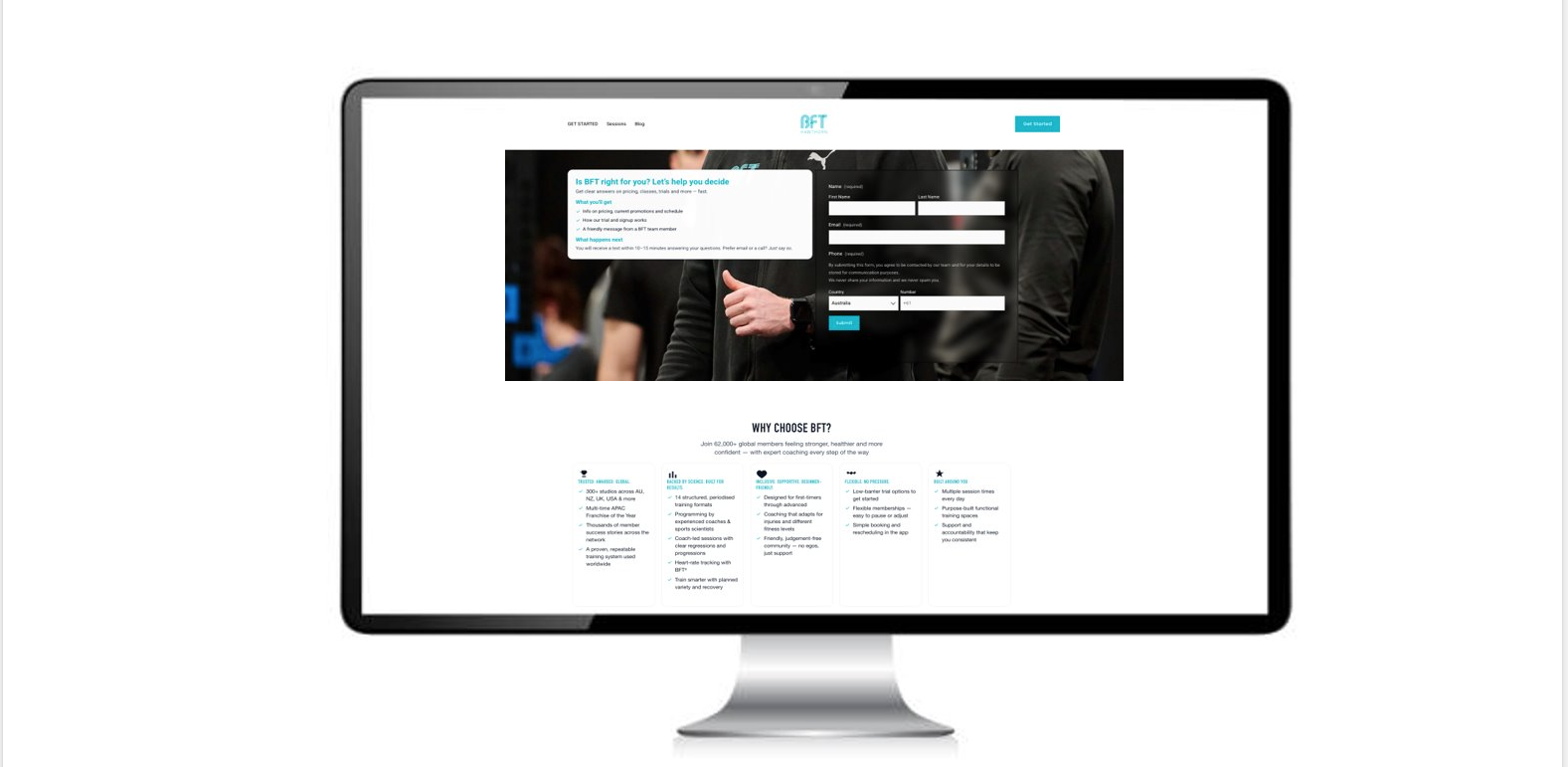How BFT lifted lead engagement by 63.6%
The business challenge
BFT is one of the world’s fastest-growing boutique fitness brands.
Each local gym has its own homepage – the digital front door where potential members learn about the gym and register interest through an enquiry form.Traffic wasn’t the problem. Plenty of visitors were reaching these pages and filling out the form. The issue came after: less than half (44.8%) engaged when BFT followed up. High intent was stalling before conversations – and memberships were being left on the table.
The behavioural challenge
On the surface, the landing page and enquiry form looked fine. But behaviourally, they were full of hidden traps. Our behavioural diagnosis uncovered cognitive, emotional, and contextual barriers that caused prospects to freeze. Small doubts carried big weight: Will I be spammed? What happens after I hit submit? Is this a sales push or a genuine conversation?
The experience wasn’t behaviourally optimised. Instead of instilling confidence, it triggered hesitation.
The solution
In just seven days, Flowing Bee conducted online behavioural research with 142 Australians attending or considering boutique fitness studios. This revealed the psychology, motivations, and information needs shaping decisions in this category.
“Our behavioural diagnosis and jobs-to-be-done framework revealed exactly where people were stalling and why. By uncovering the barriers and emotional jobs that mattered most, we optimised the digital journey to reduce friction, build trust, and move people forward with confidence.”
— Michael Sankey, CEO & founder, Flowing Bee
Skedyul managed the data and lead conversion process for BFT. Partnering with them gave us full visibility of the funnel, allowing us to track genuine reply rates and conversion outcomes.
Turning insights into action
Armed with the insights from our behvioural research, Flowing Bee reimagined BFT’s local landing page and enquiry form, applying 22 behavioural optimisations to reduce friction and increase confidence. Examples included:
- Reduce effort costs– a shorter, simpler form lowered cognitive and physical friction, making the first step feel effortless
- Build trust– awards, 5-star reviews, and founder Cameron Falloon’s elite credentials activated authority bias and social proof, reassuring prospects they were in safe hands
- De-risk the decision– free trials, no lock-in contracts, and clear next steps neutralised uncertainty and fear of commitment
- Reframe the choice– CTAs like “Is BFT right for you?” shifted the step from purchase to exploration, lowering psychological resistance
- Prove effectiveness– highlighting real-time heart rate tracking tapped into effort–reward calibration, strengthening belief that effort translates into results
Every change was deliberate – grounded in consumer psychology and designed to give prospects clarity, control, and confidence to act.
The outcome
The results were immediate.
After the redesign, 73.3% of leads engaged with BFT’s follow-up – a 63.6% uplift in engagement. What had been a high-friction process became a conversion engine. BFT’s team had more conversations, converted more members, and unlocked real growth from the same traffic.
For BFT, this proved that evidence-based behavioural design delivers outsized results.
For marketers, it’s a clear reminder that behaviour – not just design – is the real driver of growth.
Written by Flowing Bee
1 minutes reading time
